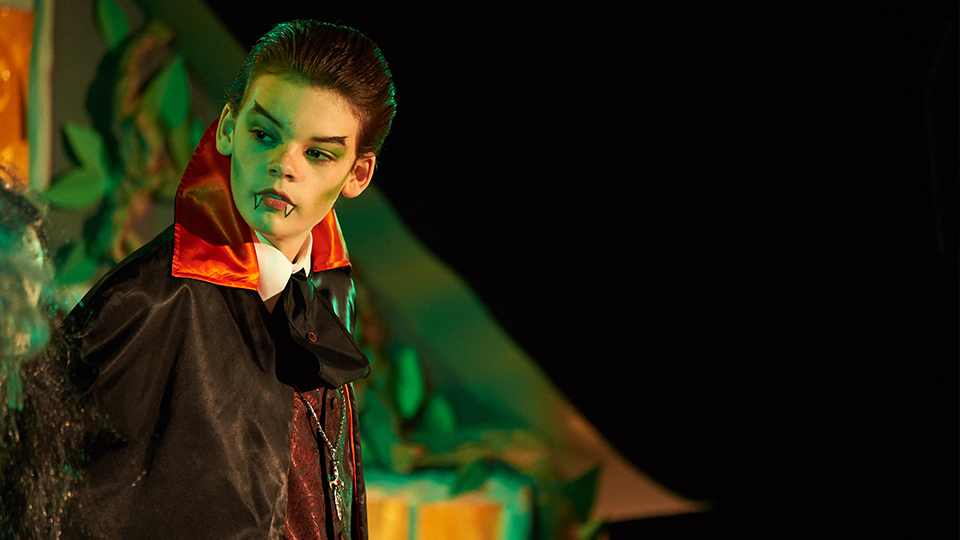Our guest blogger is Dr Jo Clyne, History Teachers’ Association of Victoria
The Kids’ Conference was founded in 2011 by Stephen Spain from the Australian Catholic University and Dr Jo Clyne from the History Teachers’ Association of Victoria. It is sponsored by the Australian Catholic University and the Department of Veterans’ Affairs.

In the past, digital technology has been very much the domain of information technology and science teachers. In these classes, students were provided with opportunities to build robots, assemble Dick Smith electronic kits and play Space Invaders. If history teachers felt a bit jealous, they could always be comforted by a resource cupboard full of pottery shards, diorama-making materials and colourful posters of historical figures spouting inspiring quotes.*
Advances in technology have completely reconfigured the educational landscape and the nature of subject-based learning. The integration of digital technology is now the responsibility of all teachers. As a consequence many history teachers struggle to envisage how they can develop the same ease with technology as their scientific colleagues.
In creating the Kids’ Conference, our overarching objective was to provide an opportunity and the inspiration for history teachers and students who wanted to use digital technology more meaningfully in their classes. As seasoned conference delegates and presenters, we knew the value of learning through the sharing of ideas and projects. As a child, I viewed conferences as Very Important Adult Business – but do they need to be?
The premise of the conference was to hold a forum where school students of all ages could present a finished project about history using innovative technology that could be shared beyond the safety of the classroom. The project had to be innovative and about history – and it had to be good.
In the first year we assembled eight primary and secondary students who presented their projects in a two-hour block to a small audience of teachers, pre-service teachers, staff from cultural organisations and academic staff from a cluster of Victorian universities. Six years on, the program is now conducted over a full day with primary students in the morning and secondary students in the afternoon.
How do we define ‘innovative technology’?
After the first year, we realised that teachers and students around Victoria had very different ideas about the concept of ‘digital innovation’. We have since placed a very strict ban on PowerPoint as an ‘innovative technology’. It was mind-blowing in 2004, but in 2016 we can do better
The Kids’ Conference provides students and teachers with a forum to showcase innovative projects, including those involving game coding, app development, Minecraft, augmented reality and the use of techniques and applications such as green screening, Puppet Pals, Book Creator and stop motion.
A favourite conference moment was when a senior student demonstrated the notetaking app he had developed to help his class study for a VCE history exam, and teachers began to immediately download it onto their phones. A winning scenario for the historically-minded student entrepreneur.
What could go wrong?
Organising conferences with student presenters can sometimes be a challenge. What if they get stage fright? What if they cry? What if their digital project doesn’t load properly? Will the students travelling from regional areas get to the conference venue on time? What if presenters are subjected to non-constructive criticism from the audience? Is it fair to ask students to stand up in front of an audience – a concept many adults struggle with?
Stephen and I were both justifiably nervous when our youngest presenter, all of seven years old, stepped up to the lectern. However, our fears were unfounded – she sailed through her content with the confidence of a professor emeritus. Indeed, I still show her presentation at teacher professional development training.
Do participants enjoy it?
Our conference evaluation forms from that first year were extremely simple – they included three thought bubbles or ‘sound bites’ and a question: ‘What did you think of the Kids’ Conference?’. However, the response from both students and audience members provided the sort of positive feedback required to know that we were on the right track.
‘I’ve never been more excited to use technology in the history classroom. See you next year!’
‘An inspiring student-led experience…not to miss!’
‘As a pre-service teacher this is the perfect day to demonstrate creativity and best practice in the history classroom.’
‘Very informative regarding what technology students are finding most beneficial to their learning.’
‘Hearing from both primary and secondary students was priceless. It’s great to see growth through the age groups.’
‘Who are these students? Where do they come from? They are the world’s future leaders and they come from our classrooms. Very impressive students.’
‘So great to hear kids excited about history.’
‘Made me think creatively about setting assignments and assessment tasks.’
‘Can’t wait to bring some of these ideas to my own classroom!’
‘A great experience for teachers and students to share learning.’
‘Learning first hand from other students was inspirational.’
‘Positive reinforcement of teachers as well as students.’
‘Audience was really engaging and supportive.’
Six years later and the evaluation form is still exactly the same. We’ve continued to use the format for other combined student/adult events. We’re also yet to receive a single negative comment about the conference. It seems to bring out the best in both presenters and the audience.
Is it worth it?
Some of the highlights for me have been a student presenter who shared details of her learning disability with the audience as a preamble to showcasing her project. Because her disability made it difficult for her to write fluently, making a film allowed her to express her ideas. Her point was that technology had allowed her to excel in history, where in the analogue classroom she might have been dismissed as ‘not good at history.’
Each year we have students with disabilities – such as those with Asperger’s syndrome, a condition that can affect their learning and communication – participating in the conference. These students find their voice through technology and the conference empowers them, along with students from our gifted and talented program who appreciate the opportunity to spread their wings. ESL students have also featured heavily in our program.
Full disclosure: the Kids’ Conference is messy and unpredictable to organise. But every year after the last student speaker has finished and received their framed certificate we think ‘yes, this is worth it’ and start planning for the next year.
Click here to register if you would like to attend the 2016 Kids’ Conference. Students and pre-service teachers can attend for free, but they still need to register online.
*I actually really love pottery shards, diorama and historical posters.
Dr Jo Clyne
Manager of Education and Consultancy
History Teachers’ Association of Victoria
Twitter @joclyne1
joclyne@htav.asn.au









![GeoGraphics[{Thickness[0.001], {Red, GeoPath /@ (List @@@ EdgeList[NearestNeighborGraph[landingSites, 3]])}, Table[GeoDisk[#, Quantity[n, "Miles"]] & /@ landingSites, {n, 0, 1000, 250}], Red, GeoStyling[Opacity[1]], GeoDisk[#, Quantity[50, "Miles"]] & /@ landingSites}, GeoRange -> "World", GeoProjection -> "WagnerII", GeoZoomLevel -> 3]] GeoGraphics[{Thickness[0.001], {Red, GeoPath /@ (List @@@ EdgeList[NearestNeighborGraph[landingSites, 3]])}, Table[GeoDisk[#, Quantity[n, "Miles"]] & /@ landingSites, {n, 0, 1000, 250}], Red, GeoStyling[Opacity[1]], GeoDisk[#, Quantity[50, "Miles"]] & /@ landingSites}, GeoRange -> "World", GeoProjection -> "WagnerII", GeoZoomLevel -> 3]](http://blog.stephenwolfram.com/data/uploads/2016/11/input-1-revised.png)




